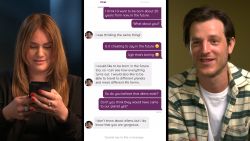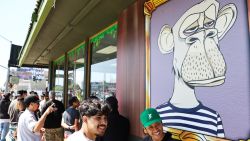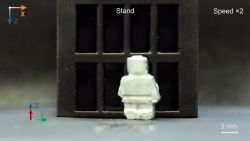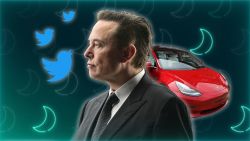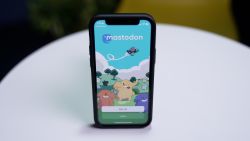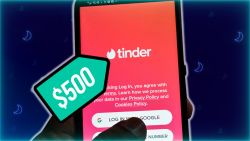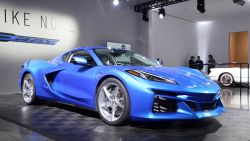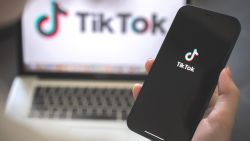Elon Musk’s move over the weekend to rebrand Twitter and replace its iconic bird logo with an X is just the latest step in his effort to make over the billionaire’s longtime favorite platform in his image.
When Musk bought Twitter late last year, he laid out a vision for an “everything” app called X, where users could communicate, shop, consume entertainment and more. Last June — prior to his takeover — Musk told Twitter employees that the platform should be more like China’s WeChat, where he said users “basically live on” the app because “it’s so usable and helpful to daily life.”
The vision for the rebrand may go all the way back to Musk’s creation of the original X.com in 1999, which Musk hoped would be an all-in-one financial platform and which eventually became PayPal.
Despite Musk’s longstanding ambitions — and the heightened stakes since he shelled out $44 billion to purchase the social network — ditching Twitter’s branding in service of a future super app is a significant risk.
Twitter still has a long way to go if Musk wants to build out the kind of services WeChat is known for — everything from ordering groceries and booking yoga classes to paying bills and chatting with friends. And that’s not to mention the financial and competitive challenges the company faces merely existing in its current form, let alone launching a massive expansion. It’s also not clear how much demand there is for such a super app outside of China, given that efforts by other platforms to simply sell users on added shopping features have been slow to take off.
“While Musk’s vision is to turn ‘X’ into an ‘everything app,’ this takes time, money, and people -— three things that the company no longer has,” Mike Proulx, research director and vice president at Forrester, said in an investor note. By ditching Twitter’s name, Proulx added, Musk “will have singlehandedly wiped out over fifteen years of a brand name that has secured its place in our cultural lexicon,” leaving him to start fresh at a precarious time for the company.
X-ing out the bird
The X branding has already started taking over Twitter.
Musk — who bought Twitter with a company called X Corp. — tweeted on Sunday that X.com now redirects to Twitter. (Musk reportedly bought the X.com domain back from PayPal in 2017.)
On Sunday night, the new stylized X logo was projected onto the company’s headquarters. And by Monday, the bird logo had been replaced by an X on Twitter’s website. Musk even told followers that tweets should instead be called “x’s.”
On Sunday, CEO Linda Yaccarino seemed to confirm Musk’s vision for the company. “X is the future state of unlimited interactivity — centered in audio, video, messaging, payments/banking — creating a global marketplace for ideas, goods, services, and opportunities,” Yaccarino said in a tweet.

Walter Isaacson, the legendary tech journalist who has been shadowing Musk to write his biography, tweeted on Sunday that Musk told him even before the Twitter acquisition that he wanted to use the social platform to fulfill his original, decades-old vision for X.com. “I am very excited about finally implementing X.com as it should have been done, using Twitter as an accelerant!” Musk texted Isaacson at 3:30 a.m. one morning last October, just ahead of his takeover, according to the writer.
On Monday, Musk explained the move in a tweet saying, “The Twitter name made sense when it was just 140 character messages going back and forth – like birds tweeting – but now you can post almost anything, including several hours of video.”
“In the months to come, we will add comprehensive communications and the ability to conduct your entire financial world,” Musk said. “The Twitter name does not make sense in that context.”
(The rebrand also seems to be a continuation of a sort of obsession with the letter “X,” which also features in the name of one of Tesla’s cars, the Model X; the name of his rocket company, SpaceX; the name of his new artificial intelligence firm, xAI; and the name of two of his children, X Æ A-Xii and Exa Dark Sideræl.)
In recent weeks, Twitter has quietly begun its effort to build out a payments business called Twitter Payments — the company was granted money transmitter licenses in four US states since last month, including Arizona and Michigan. Musk has discussed his desire to promote longer videos on Twitter. And he’s tried to shift Twitter’s business model away from advertising by allowing users to pay for verification, a strategy that has resulted in some chaos but only a limited number of actual subscriptions.
Still, Musk faces obvious hurdles to turning Twitter into a fully-developed super app. Since acquiring Twitter, Musk has fired around 80% of its staff, scared away many of the advertisers that made up its core user base and frustrated many of its users with controversial policy decisions. And now, Twitter faces steep competition from Meta’s rival app Threads, which launched to stunning success, although its usage has petered off slightly in recent days.
Musk last week also said that Twitter still has negative cash flow because of a 50% decline in ad revenue.
Even if Musk does add new features to Twitter, many US tech platforms have struggled to succeed in imitating WeChat. Deloitte said in a report published last year that Western markets are unlikely to see “a single, dominant super-app like WeChat in the near term” because the services such apps would aim to bundle together, such as digital payments and ride hailing, already “have too many well-established players.”
A 2019 effort by the social media giant then known as Facebook to create its own digital currency and payments system that the company said would make it easier to buy things online officially flopped last year following intense regulatory scrutiny. And both TikTok and Instagram have reportedly scaled back their ambitions to incorporate e-commerce onto their platforms after their shopping features failed to gain significant traction with users.
And until Musk rolls out significant changes to the platform, observers of the company say ditching Twitter’s well-known brand is a risky move.
“To rebrand without significant new features seems like a desperate attempt for attention,” especially in the wake of Meta’s launch of Threads, said Joshua White, assistant professor of finance at Vanderbilt University. “This is akin to buying Coke and changing the bottle and name without changing the formula — likely a mistake.”




